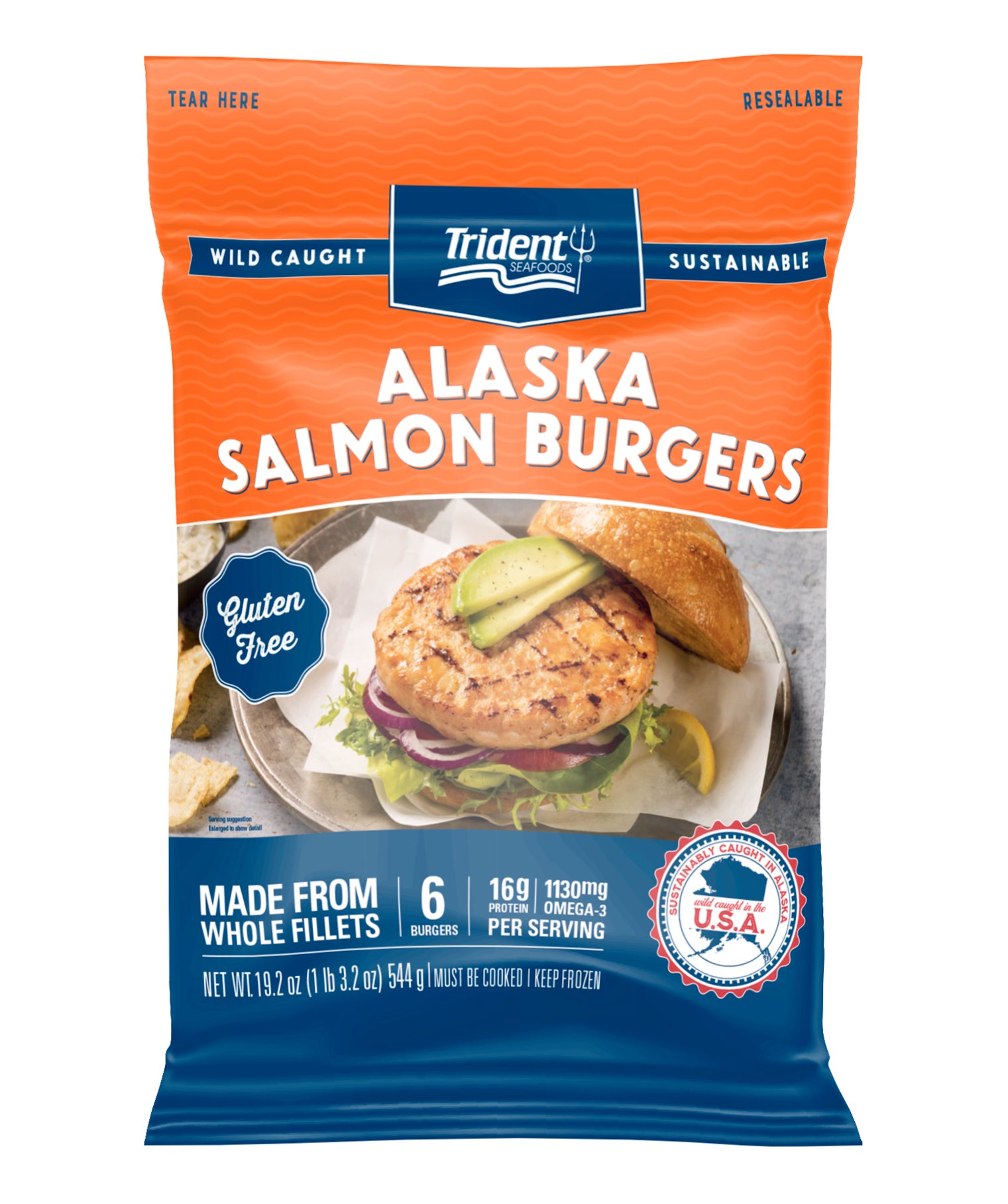Alaska Salmon Burger with Peppered Bacon
20 minutes 4 servings

Trident Seafoods
1 lb 3.2 oz
For a great tasting, healthy burger alternative, serve up delicious Trident Seafoods Wild Alaska Salmon Burgers. They’re made with wild, sustainable, ocean-caught whole fillets with no fillers and lightly seasoned with a delightful ‘just-off-the-grill,’ smoky flavor. GLUTEN FREE!
On a bun, in a wrap or pita with coleslaw, flaked over your favorite pasta, in an open-faced sandwich, or flaked and added to an omelette
Set air fryer temperature to 400°F. Place desired amount in a single layer, do not overcrowd. Cook for 11 to 12 minutes, flipping halfway through.
In a lightly oiled pan, cook over medium heat 4 to 5 minutes each side.
Preheat grill to medium heat (350°F). Cook for 3 to 4 minutes on each side.
Preheat oven to 400°F. Place frozen burger(s) on a lightly greased baking sheet. Cook for 6 to 8 minutes on each side.
Cooking times and temperatures may vary substantially. Internal temperature should be at least 165°F. We strive to produce a fully “boneless” product. As with all fish, however, occasional bones may still be present.
Microwave cooking is not recommended.
Designed to cook from frozen.
INGREDIENTS: PINK AND/OR KETA SALMON, VEGETABLE OIL (SOYBEAN AND/OR CANOLA), WATER, CONTAINS 2% OR LESS OF: ONION, SEA SALT, POTATO POWDER, GARLIC POWDER, MUSTARD POWDER, WHITE PEPPER, ROSEMARY EXTRACT, MESQUITE SMOKE FLAVOR, LEMON JUICE CONCENTRATE, BEET JUICE (COLOR), ANNATTO EXTRACT (COLOR). CONTAINS FISH (PINK AND/OR KETA SALMON)
No reviews yet